Disclosure: This article contains affiliate links. We may earn a commission from purchases at no extra cost to you, which helps our travel content.
When my buying trip to Mexico City got extended by a weekend last fall, I found myself with three glorious days to explore one of the most dynamic metropolises in the world. CDMX (as the locals call it) hits different – it's this incredible fusion of ancient history and cutting-edge design that feels like nowhere else. The city pulses with creative energy, from the heritage craftsmanship in traditional markets to the avant-garde fashion studios tucked away in Colonia Roma. As someone who hunts for unique retail experiences professionally, I was blown away by how Mexico City delivers both world-class shopping and cultural immersion without the pretension you find in some other fashion capitals. Whether you're here for the incredible street food (trust me, you'll dream about those tacos), the world-class museums, or the incredible design scene, this 3-day itinerary will help you navigate the highlights while still leaving room for those magical spontaneous moments that make travel unforgettable. Grab your most comfortable walking shoes – we're about to dive deep into the vibrant heart of Mexico City.
Day 1: Historic Center & Cultural Immersion
My first full day in Mexico City began with a strong café de olla at a local coffee shop near my hotel in Centro Histórico. The cinnamon-infused coffee was exactly the fuel I needed for a day of exploration in the historic heart of the city.
I kicked things off at the Zócalo, one of the largest public squares in the world. Standing in this massive plaza, surrounded by colonial architecture and the imposing Metropolitan Cathedral, you can literally feel the layers of history beneath your feet. The Aztec ruins of Templo Mayor sit adjacent to the cathedral – a physical representation of how Mexico City is built upon civilizations that came before.
The guided tour of Templo Mayor was worth every peso. Our guide Miguel brought the ancient Aztec civilization to life with stories that connected the archaeological remnants to the vibrant city around us. Pro tip: book your tour in advance, especially during high season.
After exploring the ruins, I made my way to Palacio de Bellas Artes, the stunning cultural center that's basically CDMX's architectural crown jewel. The Art Deco and Art Nouveau elements had me snapping photos of every detail – those marble floors and the stained glass curtain are next level. If you're into design history like me, you'll geek out over the murals by Diego Rivera and other Mexican masters.
For lunch, I navigated to Dulcería de Celaya, an old-school candy shop founded in 1874 that still uses traditional recipes. The packaging design alone is worth the visit – all vintage typography and saturated colors that would make any visual merchandiser swoon. I stocked up on cajeta (goat's milk caramel) candies that made perfect gifts for my team back home.
The afternoon called for the National Museum of Anthropology, which houses the most comprehensive collection of pre-Hispanic art in Mexico. The Aztec Calendar Stone and the recreation of Pakal's tomb had me completely mesmerized. I easily spent three hours here and could have stayed longer. Make sure your portable charger is fully juiced – you'll be taking tons of photos and the museum is massive.
As evening approached, I made my way to Contramar in Colonia Roma for their legendary tuna tostadas and grilled fish. The restaurant's minimal yet warm aesthetic perfectly complements their seafood-forward menu. It's a bit of a splurge but absolutely worth it for the quality and atmosphere – just be sure to make reservations weeks in advance.
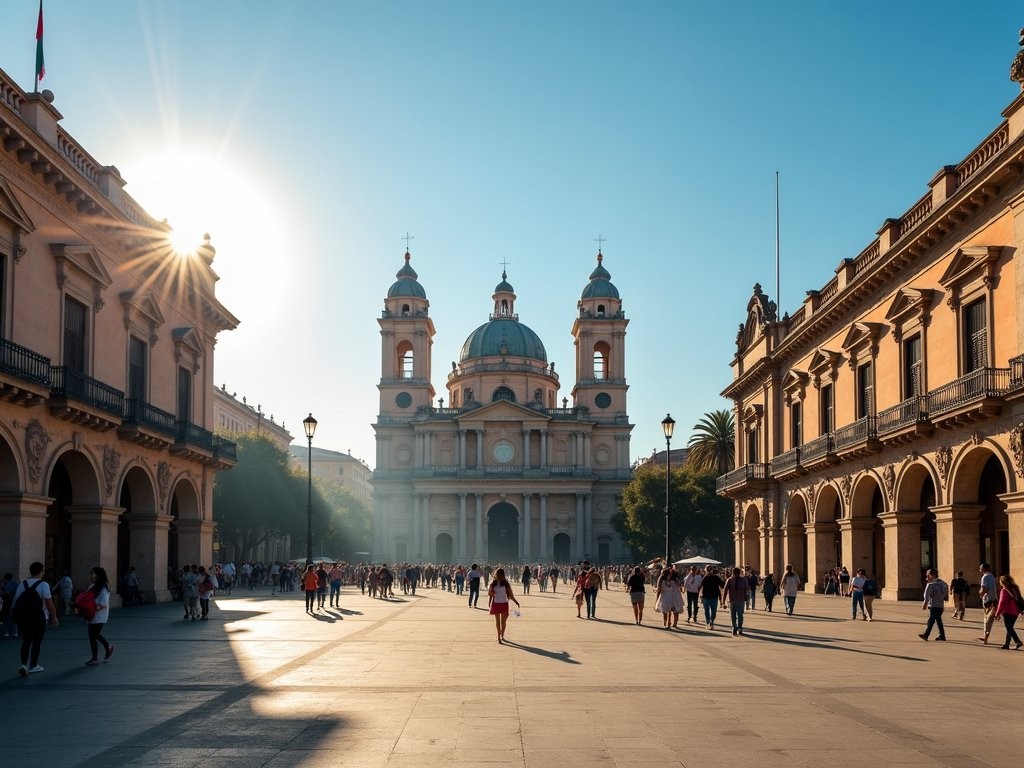
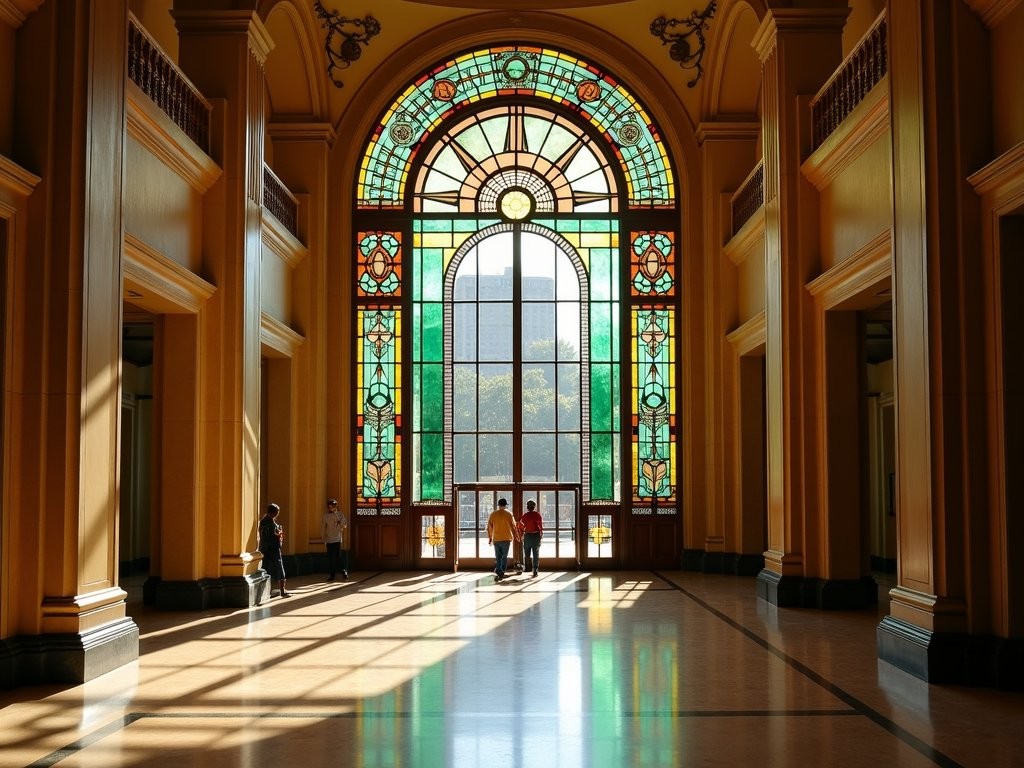
💡 Pro Tips
- Book museum tickets online to avoid long lines at popular sites like Templo Mayor and the National Museum of Anthropology
- Wear comfortable shoes with good support – Mexico City's historic center requires lots of walking on uneven surfaces
- Carry small denominations of pesos for street vendors, bathroom attendants, and unexpected treasures
Day 2: Markets, Shopping & Design Districts
Day two was all about indulging my retail buyer's soul in Mexico City's incredible markets and design districts. I started early at La Ciudadela, the artisan market that's basically heaven for anyone who appreciates handcrafted goods. The textiles here are next level – from vibrant Otomi embroidery to intricate rebozos (traditional shawls) that take months to complete. I spent way too much time examining the craftsmanship of each piece, mentally cataloging inspiration for our upcoming seasonal displays.
What makes La Ciudadela special is the direct connection to artisans – many items come straight from indigenous communities throughout Mexico. I picked up several hand-painted alebrijes (colorful wooden animal sculptures) from Oaxaca that now have prime placement on my bookshelf at home. The prices are reasonable, but don't be afraid to negotiate gently – it's expected.
By mid-morning, I headed to Mercado de Medellín in Roma Sur, a food market with incredible Latin American diversity. The Cuban sandwich stand is legendary, but I was there for the fresh tropical fruits I can't get back home. The vendor had me sample guanábana and mamey – flavor profiles that would inspire any food or fragrance buyer.
After a quick refresh at my hotel, I grabbed my crossbody bag (essential for keeping valuables secure while shopping) and made my way to Colonia Roma and Condesa – the twin neighborhoods that are basically CDMX's answer to Brooklyn, but with a distinctly Mexican design sensibility.
My first stop was Córdoba 25, a concept store housed in a gorgeous colonial building showcasing Mexico's most exciting emerging designers. The visual merchandising was impeccable – minimal displays that let the craftsmanship speak for itself. I was particularly drawn to a local jewelry designer working with recycled silver in organic, sculptural forms.
From there, I wandered to Taxonomía, a beautifully curated homewares store that feels like stepping into the apartment of Mexico City's most stylish resident. Their selection of contemporary ceramics by local artisans had me seriously considering shipping options. The owner shared that many pieces represent modern interpretations of pre-Hispanic pottery techniques – that perfect blend of heritage and innovation that makes Mexican design so compelling.
For late afternoon, I visited the upscale Polanco neighborhood to check out El Palacio de Hierro – Mexico's premier luxury department store. As a retail buyer, I always make time to see how different markets merchandise global brands. Their visual displays incorporated distinctly Mexican elements while maintaining luxury standards – a masterclass in localized retail execution.
Dinner was at Rosetta, housed in a stunning Porfirian mansion in Roma Norte. Chef Elena Reygadas' fresh pasta dishes have earned international acclaim, and the restaurant's romantic atmosphere – all high ceilings and lush indoor plants – made for the perfect end to a design-filled day. The bread basket alone is worth the visit – trust me on this one.
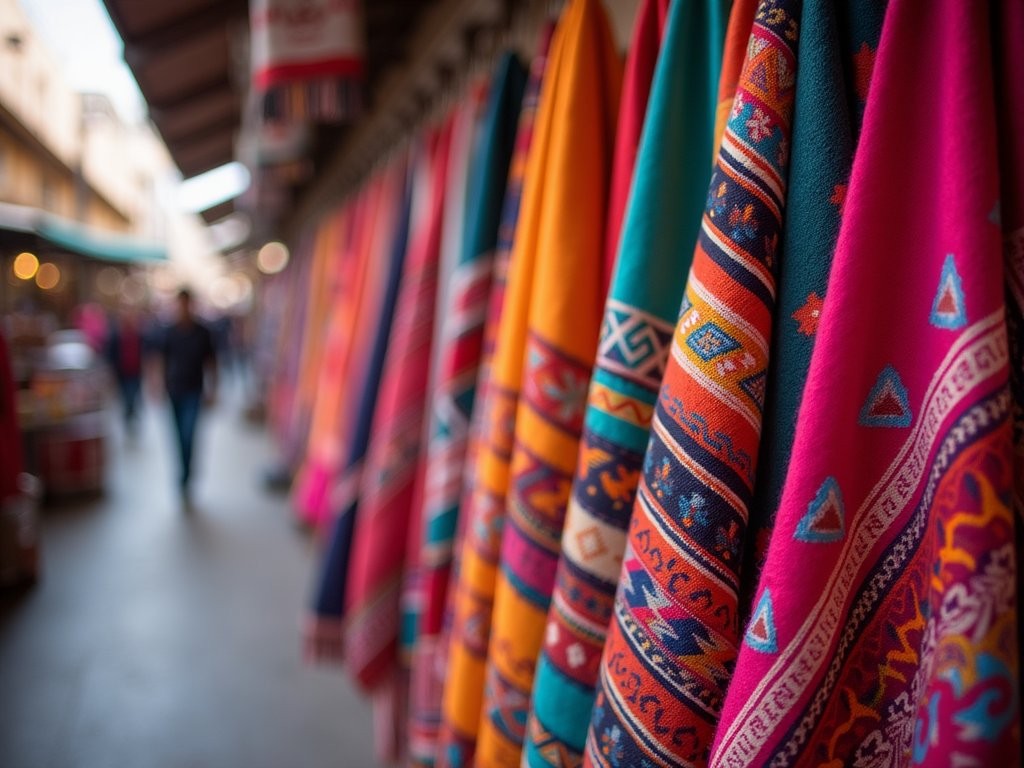

💡 Pro Tips
- Visit La Ciudadela early to avoid crowds and get the best selection of artisanal goods
- Bring an extra foldable tote bag for market purchases – you'll need it
- Save room in your luggage for unique design finds – Mexico City's emerging designers create pieces you won't find elsewhere
Day 3: Coyoacán, Frida's World & Modern Art
My final day in Mexico City was dedicated to exploring the southern neighborhoods, starting with the bohemian enclave of Coyoacán. This area feels worlds away from downtown's hustle – more like a charming village with cobblestone streets and colorful buildings than part of a megalopolis.
The main draw here is Casa Azul (The Blue House), Frida Kahlo's former home turned museum. I'd booked my tickets online weeks in advance – an absolute must as they sell out daily. Walking through Frida and Diego's personal spaces was a profound experience. Her studio remains exactly as she left it, paint tubes still open on her table. What struck me most was her collection of traditional Mexican clothing and personal items – the way she curated her appearance as deliberately as her art. As someone who thinks about visual presentation professionally, seeing how Frida constructed her identity through both her paintings and personal style was incredibly moving.
After spending a contemplative morning at Casa Azul, I needed a caffeine boost and found it at Café Avellaneda, a tiny specialty coffee shop nearby. Their lavender latte was the perfect pick-me-up, served in beautiful handmade ceramic cups that had me asking where I could buy them (turns out they're made by a local potter who supplies several cafés in the area).
Refueled, I wandered to the main square of Coyoacán where weekend markets fill the plaza. Street performers, food vendors, and artists create a carnival-like atmosphere. I couldn't resist the churros – freshly fried and rolled in cinnamon sugar – from a stand that's apparently been there for decades.
For the afternoon, I headed to Museo Jumex and Museo Soumaya in the Polanco district – two architectural marvels housing impressive art collections. Jumex focuses on contemporary art while Soumaya's distinctive curved facade contains Carlos Slim's personal collection spanning centuries. The contrast between these ultra-modern museums and the historical sites I'd visited earlier in the trip highlighted Mexico City's fascinating juxtapositions.
As the sun began to set, I made my way to Chapultepec Park, one of the largest city parks in the Western Hemisphere. The light filtering through the trees created a magical atmosphere as families enjoyed their Sunday tradition of gathering outdoors. I rented a portable Bluetooth speaker to play some local music while I people-watched – sometimes the best travel experiences are simply observing everyday life.
For my final dinner, I chose Pujol, Chef Enrique Olvera's renowned restaurant that reinvents traditional Mexican cuisine. The famous mole madre had been aging for over 2,000 days when I visited – a testament to how tradition and innovation coexist in Mexico City's culinary scene. The minimal, earthy interior design complemented the food perfectly – neutral tones letting the vibrant dishes take center stage. Yes, it's a splurge, but as a once-in-a-lifetime dining experience, it was the perfect finale to my Mexico City adventure.
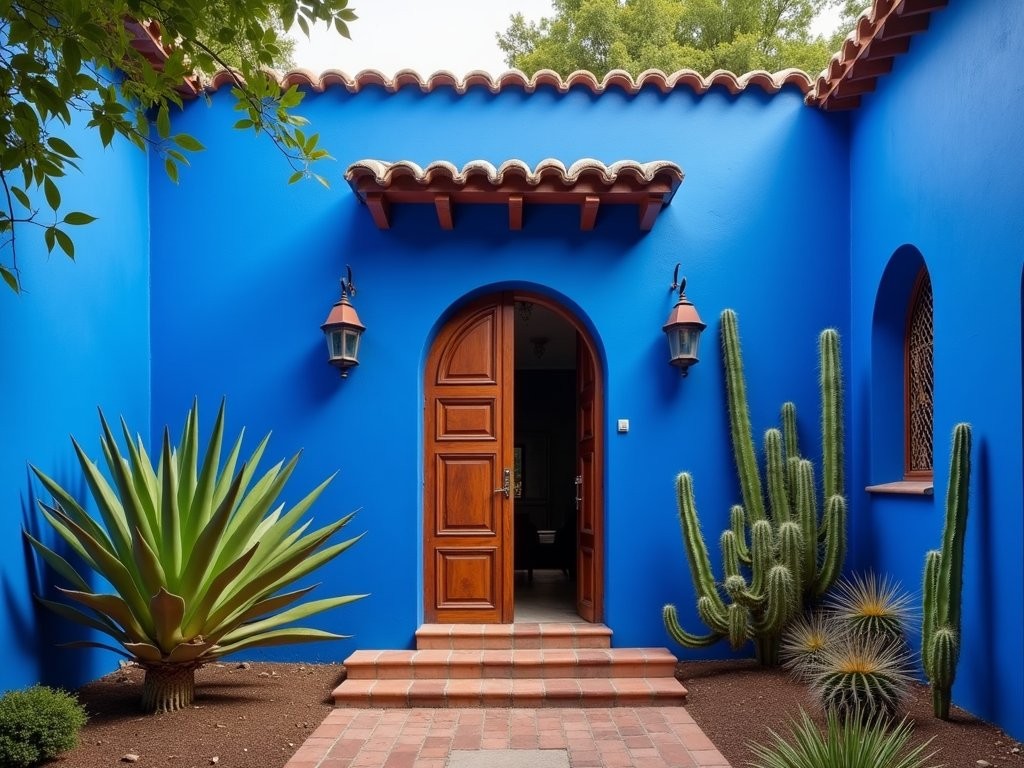

💡 Pro Tips
- Book Casa Azul tickets at least 2-3 weeks in advance – they sell out quickly, especially on weekends
- Visit museums on Sunday when many locals enjoy them as part of their weekly routine
- Schedule Pujol reservations as soon as you know your travel dates – the restaurant books up months ahead
Where to Stay: Neighborhood Guide
Choosing the right neighborhood in Mexico City can make or break your experience – this sprawling metropolis has distinct areas each with their own unique vibe. During my three days, I stayed at Hotel Carlota in the Cuauhtémoc district, which proved to be the perfect base for exploration.
For first-timers to Mexico City, I recommend focusing on these key neighborhoods:
Centro Histórico (Historic Center): If you're all about being in the middle of the action and don't mind tourist crowds, the historic center puts you steps from major attractions like the Zócalo, Templo Mayor, and Palacio de Bellas Artes. Accommodations range from budget hostels to the ultra-luxe Gran Hotel Ciudad de México with its stunning Tiffany stained glass ceiling. The area quiets down significantly at night, which is something to consider.
Roma & Condesa: These adjacent neighborhoods are my personal favorites and where I spend most of my free time when in CDMX for work. Think tree-lined streets, Art Deco architecture, hip cafés, and some of the city's best restaurants and boutiques. The vibe is young, creative, and international – perfect for couples looking for romantic sidewalk cafés and beautiful parks. Condesa feels slightly more residential while Roma has more commercial activity. My go-to recommendation is La Valise Mexico City in Roma Norte – each of their suites has unique design elements that incorporate local craftsmanship.
Polanco: Often called the "Beverly Hills of Mexico City," Polanco is upscale, manicured, and home to luxury shopping along Avenida Presidente Masaryk. If your travel style leans toward high-end experiences, this neighborhood delivers with some of the city's finest hotels and restaurants. Las Alcobas is a stunning boutique hotel that offers personalized service and sophisticated design.
Coyoacán: For those seeking a more laid-back, bohemian atmosphere, Coyoacán offers a charming alternative to the urban intensity of central neighborhoods. It's a bit farther from downtown attractions but rewards with character and cultural significance. Staying here means quieter evenings and a more local experience.
When booking accommodations, I always pack my silk sleep mask – Mexico City's vibrant energy often means ambient light and noise, especially in central neighborhoods. Most mid-range and luxury hotels provide excellent soundproofing, but it's always good to have sleep essentials just in case.
Regardless of which neighborhood you choose, I recommend staying somewhere with helpful staff who can assist with restaurant reservations and transportation. Mexico City's metro system is efficient but can be overwhelming for first-timers, and having someone local to help navigate the city's size is invaluable.
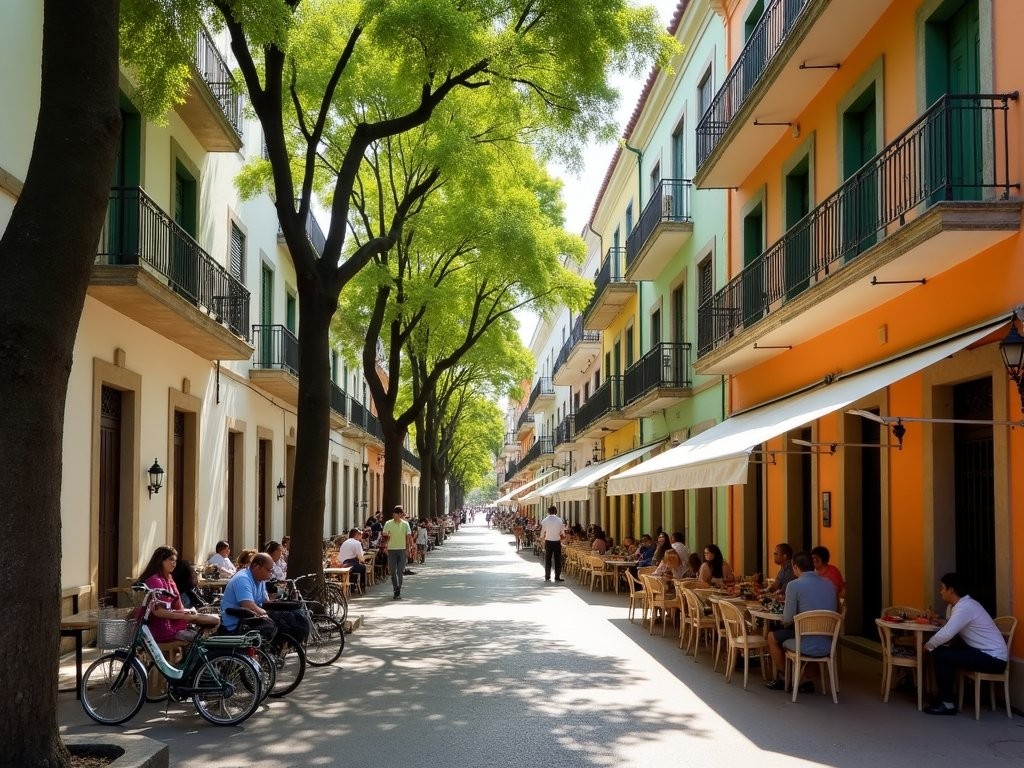
💡 Pro Tips
- Book hotels with 24-hour reception desks for added security and convenience when arriving on late flights
- Choose accommodations near metro stations or major avenues for easier transportation
- Consider the walking score of your neighborhood – some areas of CDMX are much more pedestrian-friendly than others
Navigating Food & Drink Like a Local
Mexico City's culinary scene is nothing short of extraordinary – from street food that will ruin you for tacos anywhere else to fine dining that rivals any global food capital. As someone who plans entire trips around meals, I've developed a strategy for eating my way through CDMX that balances bucket-list restaurants with authentic local experiences.
Street Food Essentials
Let's start with street food – the heart and soul of Mexico City's culinary identity. My golden rule: follow the crowds of locals. Long lines usually indicate two things: the food is exceptional, and the turnover is high enough that everything stays fresh.
Tacos al pastor are non-negotiable – marinated pork sliced from a vertical spit, topped with pineapple, cilantro, onion, and salsa on a small corn tortilla. My favorite spot is El Huequito in Centro Histórico, where they've been perfecting their recipe since 1959. The contrast between the caramelized pork edges and juicy center creates a flavor profile that's impossible to forget.
For breakfast, seek out stands selling tamales and atole (a warm, thick corn-based drink). The tamales oaxaqueños wrapped in banana leaves rather than corn husks have a moister texture and complex flavor that pairs perfectly with the cinnamon-infused champurrado (chocolate atole).
When approaching street vendors, a few phrases of Spanish go a long way. Start with "Qué me recomienda?" (What do you recommend?) and you'll often get their best offering. Most stands have a salsa roja (red) and verde (green) – the verde is typically milder but ask "¿Pica mucho?" (Is it very spicy?) if you're sensitive to heat.
Mid-Range to High-End Dining
Mexico City offers exceptional value at its mid-range restaurants. Contramar remains my favorite for seafood, while Rosetta's handmade pasta and Mexican-Italian fusion consistently impresses. For contemporary Mexican cuisine that won't break the bank, Fonda Fina in Roma Norte serves elevated comfort food in a beautiful setting.
On the fine dining front, Pujol and Quintonil typically make every foodie's bucket list, and for good reason. What makes these restaurants special isn't just the technical execution but how they honor indigenous ingredients and traditional techniques while pushing boundaries. Book these reservations before your flights – seriously.
Drinking Culture
Mexico City's beverage scene goes far beyond margaritas. Mezcal is having a global moment, but tasting it at its source is an entirely different experience. La Clandestina in Condesa offers guided tastings that showcase regional variations of this complex spirit. I always travel with my pocket notebook to jot down the names of exceptional small-batch producers that aren't exported.
For coffee culture, Mexico City rivals any European capital. Besides Café Avellaneda mentioned earlier, Buna in Roma Norte sources directly from Mexican producers and roasts on-site. Their baristas can explain the distinct characteristics of beans from Chiapas versus Veracruz – a level of terroir discussion usually reserved for wine.
Don't miss pulquerías – traditional establishments serving pulque, a milky, slightly viscous fermented drink made from agave sap. It's an acquired taste with ancient roots and comes in various flavored versions called curados that make it more approachable for first-timers. Las Duelistas in Centro Histórico offers a lively atmosphere to sample this pre-Hispanic beverage.
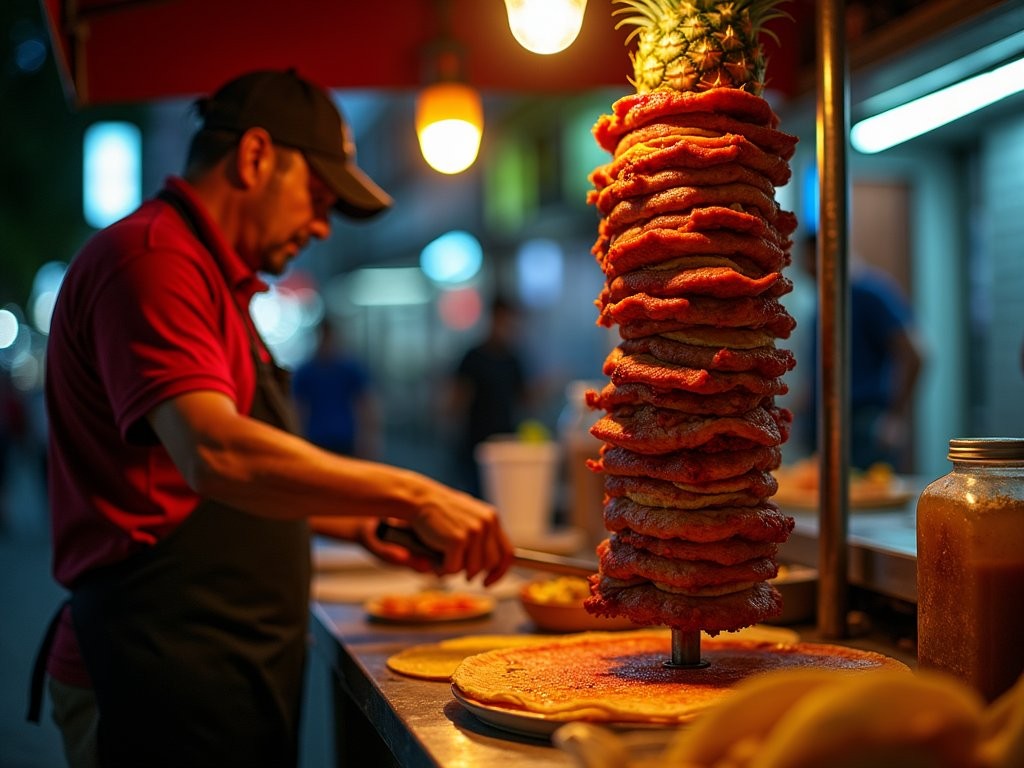
💡 Pro Tips
- Carry hand sanitizer for street food adventures, but don't skip the experience out of unfounded fears
- The best tacos are often found at stands with just one specialty rather than places with extensive menus
- Always confirm the price before ordering at street stands – most are honest but tourist areas occasionally have surprise pricing
Shopping Guide: From Markets to High Design
As a retail buyer, I approach shopping in Mexico City with a professional eye – I'm always looking for that perfect balance of craftsmanship, design innovation, and cultural authenticity. What makes CDMX exceptional is how it seamlessly blends traditional markets with cutting-edge concept stores, offering something for every shopping style.
Traditional Markets
Beyond La Ciudadela, which I covered earlier, Mercado de Artesanías La Diana in Coyoacán offers a more local experience with fewer tourists. Their selection of textiles from Chiapas and Oaxaca features some of the finest embroidery work I've seen anywhere in Mexico. The vendors here are often the artisans themselves, creating an opportunity for meaningful connection and understanding the stories behind each piece.
For food markets, Mercado de San Juan is the chef's market of Mexico City. The selection of exotic ingredients, from imported cheeses to insects used in pre-Hispanic cuisine, makes this a fascinating cultural experience even if you're not cooking during your stay. The seafood vendors will prepare fresh ceviche on the spot – an unexpected treat in a landlocked city.
When shopping at markets, bring cash and be prepared to negotiate, but always do so respectfully. A good rule of thumb is to offer about 70-80% of the initial price and meet somewhere in the middle. Remember that handmade items represent hours of skilled labor, so focus on finding fair prices rather than rock-bottom deals.
Contemporary Mexican Design
Mexico City is experiencing a design renaissance, with local creators reinterpreting traditional techniques through a contemporary lens. 180° Shop in Roma Norte showcases emerging Mexican designers across fashion, home goods, and accessories. Their carefully edited selection emphasizes sustainability and ethical production – values that resonate strongly with conscious consumers.
Carla Fernández's boutique in Juárez neighborhood deserves special attention. Her fashion designs preserve indigenous textile techniques while creating thoroughly modern silhouettes. The architectural details of her garments reflect a deep understanding of how traditional Mexican clothing construction can inform contemporary design.
For home goods with a distinctly Mexican perspective, check out Onora in Polanco. Their collaborations with artisan communities throughout Mexico result in ceramic, textile, and wood pieces that honor traditional craftsmanship while fitting seamlessly into modern interiors. I purchased a set of black clay serving dishes from Oaxaca that have become conversation starters at every dinner party I host.
Luxury Shopping
El Palacio de Hierro Polanco is Mexico's answer to Selfridges or Bloomingdale's – a luxury department store with both international brands and dedicated sections for Mexican designers. Their Diseñadores Mexicanos area on the third floor offers a convenient overview of established national talent if you're short on time.
For those seeking high-end shopping, Avenida Presidente Masaryk in Polanco is Mexico's version of Rodeo Drive, with luxury flagships from global brands alongside multi-brand boutiques like Lago DF that mix international designers with high-end Mexican labels.
Before any serious shopping expedition, I always make sure my packing cubes are ready in my suitcase. They're essential for organizing purchases and maximizing luggage space – especially important when bringing home fragile items like ceramics or textiles that need careful packing.
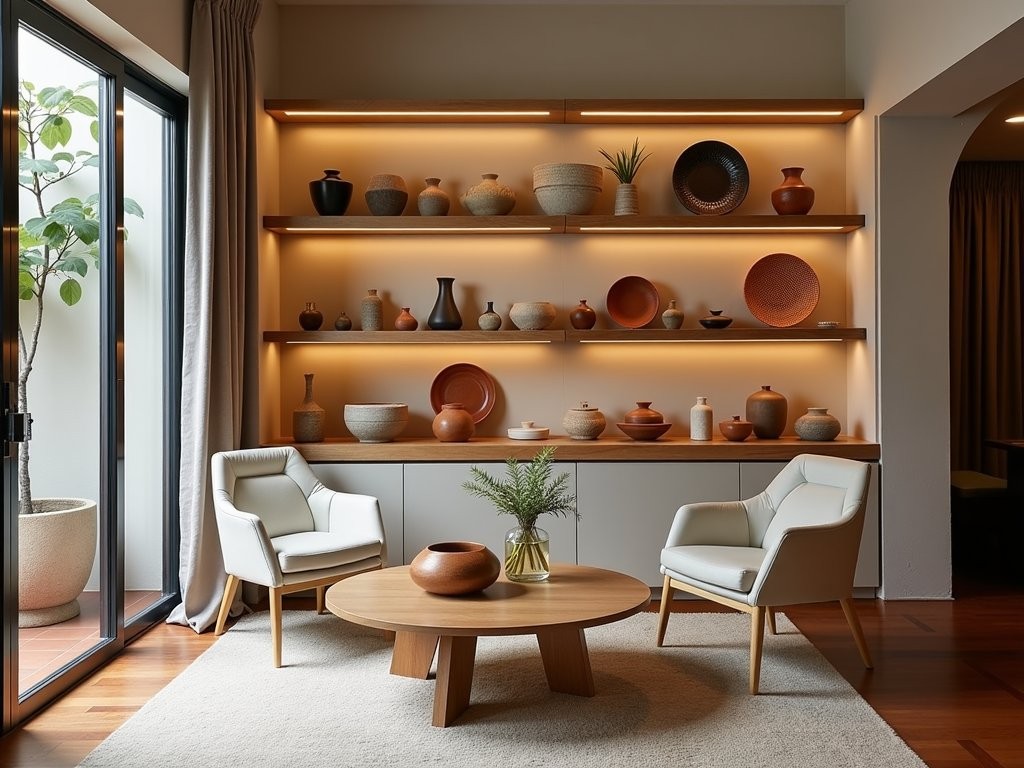
💡 Pro Tips
- Bring an extra foldable duffel bag for purchases – Mexican crafts and design objects are irresistible
- Ask for tax refund forms when shopping at higher-end stores – tourists can often reclaim the 16% VAT at the airport
- Most artisanal shops can arrange international shipping for larger items, though prices vary widely
Final Thoughts
Three days in Mexico City barely scratches the surface of what this incredible metropolis has to offer, but it's enough time to fall completely in love with its energy. What struck me most was the city's seamless blend of ancient tradition and forward-thinking design – from Aztec ruins to cutting-edge concept stores, often within the same neighborhood. The connections between past and present aren't just preserved in museums; they're actively evolving through the hands of artisans, chefs, and designers who honor their heritage while pushing boundaries.
As you plan your own Mexico City adventure, remember that the best experiences often happen when you leave room for spontaneity. Some of my favorite memories came from following the recommendation of a local shop owner or taking an unexpected detour down a colorful side street. Mexico City rewards the curious traveler with layer upon layer of discovery.
Whether you're here for the world-class museums, the incredible food scene, or to hunt for unique design treasures like me, CDMX delivers with an authenticity and warmth that keeps drawing me back. Until next time, Mexico City – you've left me inspired, well-fed, and already planning my return.
✨ Key Takeaways
- Book major attractions and top restaurants well in advance – Mexico City's popularity means spontaneous visits to places like Casa Azul or Pujol are nearly impossible
- Balance your itinerary between historic sites, markets, and contemporary culture to experience the city's fascinating contrasts
- Connect with local artisans and designers for a deeper understanding of Mexico's rich craft traditions and emerging design scene
📋 Practical Information
Best Time to Visit
Fall (October-November) for mild temperatures and fewer crowds
Budget Estimate
$100-200 per day excluding accommodations
Recommended Duration
Minimum 3 days, ideally 5-7 days
Difficulty Level
Easy
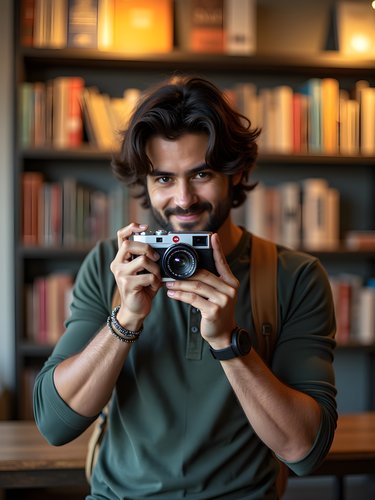
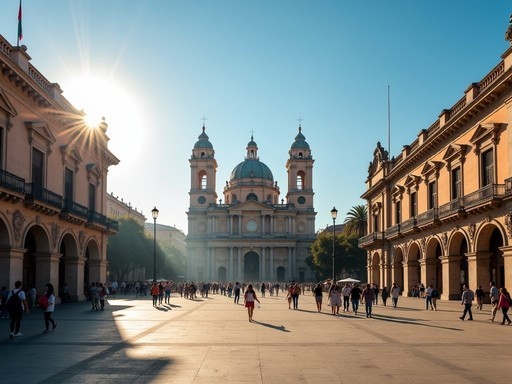
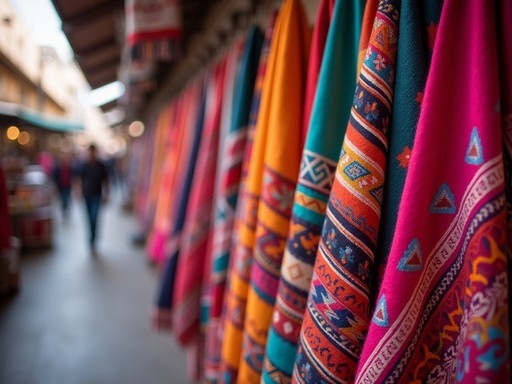
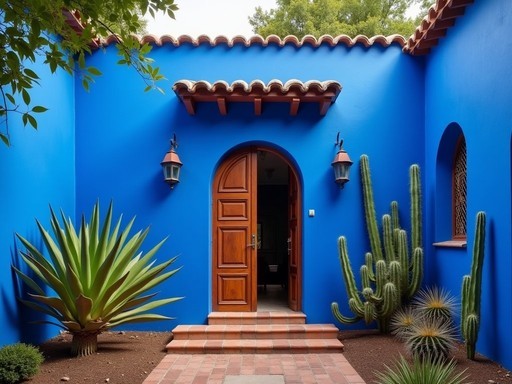
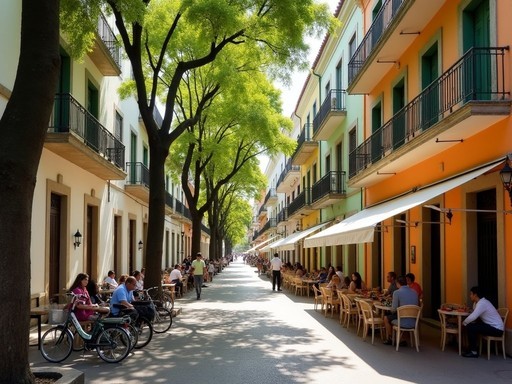
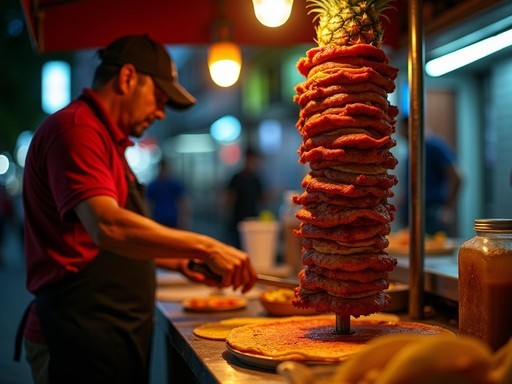
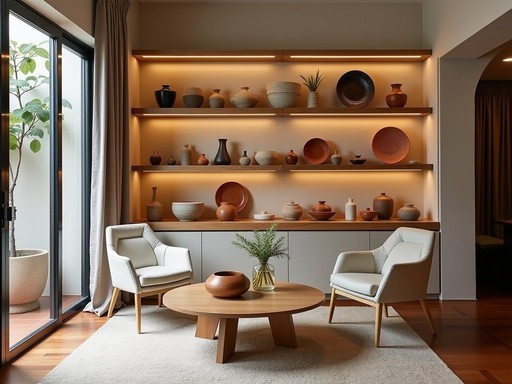


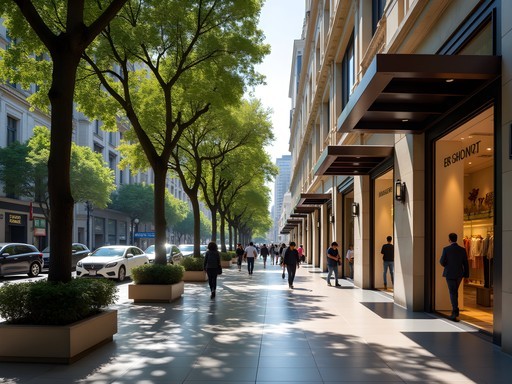
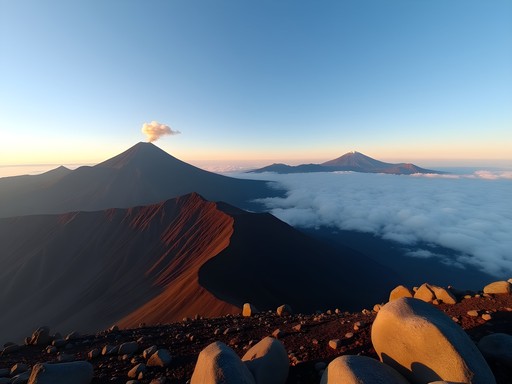
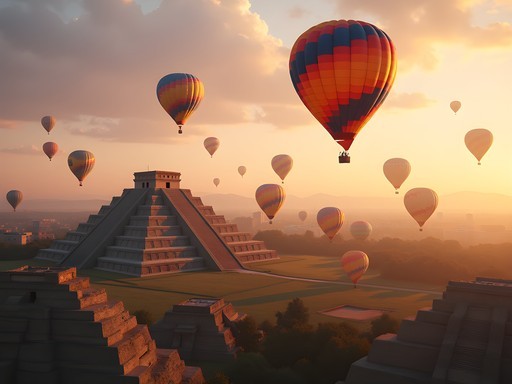
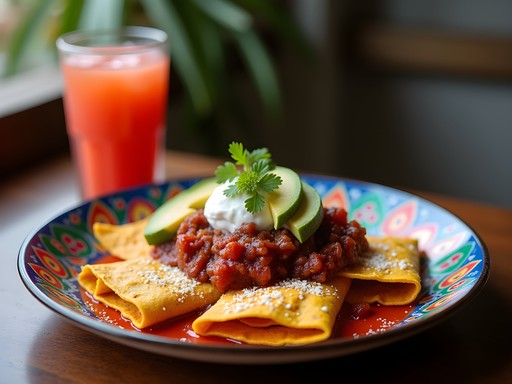
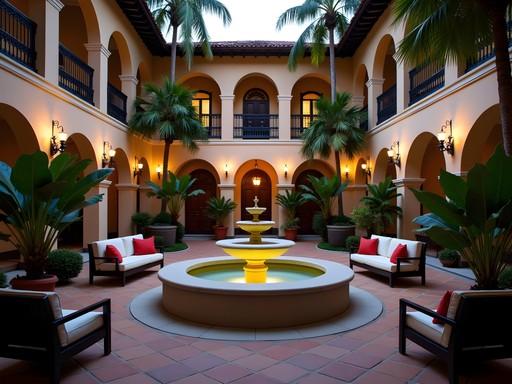
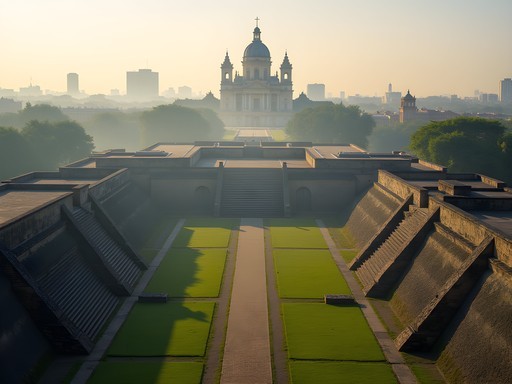

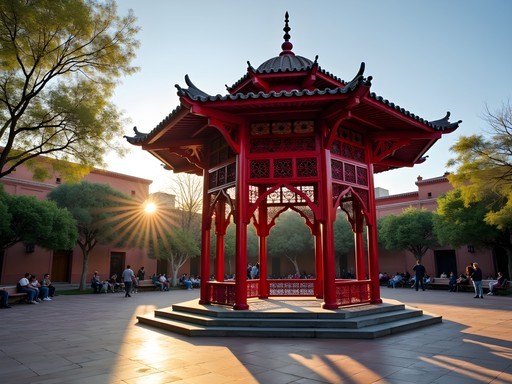
Comments
Frank Garcia
Great breakdown of CDMX! I'd add that Coyoacán deserves even more time if possible - the neighborhood has such a different feel from central Mexico City. Beyond Frida's house, the local market there has some of the best tostadas I've ever eaten. The little coffee shops around the main square are perfect for people watching too. I found having my pocket guidebook really useful for those spontaneous detours. One tip: if you're there on Sunday, Reforma boulevard closes to cars and becomes a massive bike route - you can rent bikes and join thousands of locals enjoying the city!
bluelegend
The Sunday Reforma bike thing sounds amazing! Adding that to my list for sure.
travelfan
Just got back from Mexico City and your Day 2 itinerary was PERFECT! The markets were incredible - I could have spent all day at La Ciudadela. Those colorful alebrijes are amazing but I had to be selective since my suitcase was already full. We added Mercado Roma for lunch which was a great modern food hall option. The churros at El Moro were life-changing! Did anyone else find Polanco a bit too fancy? We felt underdressed there after a day of market shopping lol.
bluelegend
Those churros are seriously addictive! I went back three times during my trip 😂
Frank Garcia
Polanco is definitely the upscale area! Next time try Roma Norte or Condesa for a more relaxed vibe but still great shopping. I found some amazing vintage shops in Roma that were way more affordable than the designer stores in Polanco.
bluelegend
Great post! How safe did you feel using the metro in Mexico City? I've heard mixed things and I'm planning a trip in January.
travelfan
Not the author but we used the metro everywhere in CDMX last month and felt totally safe! Just use normal city precautions - keep valuables secure and be aware of your surroundings.
Frank Garcia
The metro is actually super efficient and crazy cheap (like 5 pesos per ride). Just avoid rush hour if possible - it gets packed! I'd recommend getting a metro card if you're staying more than a day. The pink women-only carriages are helpful for solo female travelers too.
bluelegend
Thanks for the tips! Definitely getting that metro card then.
Megan Martin
Jose, this is such a well-balanced itinerary! I travel to CDMX quarterly for work and always recommend first-timers start in the historic center. One suggestion I'd add - for anyone staying in Roma Norte or Condesa, try breakfast at Lardo or Contramar before heading to Coyoacán on Day 3. The coffee scene in those neighborhoods is incredible. Also, I'd recommend visitors download the Didi app (Mexico's equivalent to Uber) - often cheaper and just as reliable. I always carry my portable translator which has been invaluable in markets when my Spanish fails me!
bluechamp
Contramar is amazing! We had the tuna tostadas there and still dream about them. Did you find Roma Norte safe to walk around at night?
Megan Martin
Yes! Roma Norte and Condesa are both very walkable at night. Lots of people out, well-lit streets, and plenty of restaurants open late. Just use normal city precautions - I've never had any issues in those areas.
bluechamp
Just got back from Mexico City last week and this itinerary is pretty spot on! We did almost the same route for Day 1 but added the Templo Mayor ruins which were fascinating. The metro was super easy to use and way cheaper than Ubers (though we did use those at night). One tip: the Zócalo area gets crazy busy on weekends, so hitting the historic center on a weekday is smart if you can.
Megan Martin
Great point about the Templo Mayor! I've found weekday mornings are perfect for the historic center - fewer crowds and better lighting for photos. Did you feel safe using the metro?
bluechamp
Yeah, the metro felt totally safe during the day! We just avoided it late at night and when it was super crowded. The pink women-only cars are great too for solo female travelers.
coffeewalker5894
That shot of Palacio de Bellas Artes is stunning! Did you go inside for a performance? We saw the Ballet Folklórico there and it was a highlight of our trip. Also, totally agree about Coyoacán - such a different vibe from the rest of the city. We spent a whole afternoon just people-watching in the plaza.
Taylor Moreau
Having visited Mexico City quarterly for business over the past decade, I'd add a practical note: the altitude (7,350 feet) affects many visitors. Fatigue and mild headaches are common the first day or two. Stay hydrated, moderate alcohol consumption initially, and consider planning lighter activities for your first day. For business travelers extending their stay, the Reforma area offers excellent connectivity while still providing easy access to the cultural highlights mentioned in this itinerary.
smartgal
Just booked my tickets after reading this!!! So excited to try all the food markets you mentioned. Has anyone done the Teotihuacan pyramids as a day trip? Worth it?
wanderlover
100% worth it! Get there early (like 8am) to beat crowds and heat. We used this guided tour and it made such a difference having someone explain the history. Bring sunscreen and water!
roamguide
Would you recommend Roma Norte or Condesa for a first-timer? Trying to decide where to book my Airbnb!
Taylor Moreau
Both are excellent choices. Roma Norte has more of an edgy, artistic vibe with fantastic restaurants and coffee shops. Condesa feels slightly more upscale and residential with beautiful parks. You can't go wrong with either, but I personally prefer Roma Norte for its walkability and energy. Do ensure your accommodation has good security regardless of neighborhood.
roamguide
Thank you! Roma Norte sounds more my vibe.
Douglas Bradley
Solid itinerary, Jose. I'd suggest adding Biblioteca Vasconcelos to Day 1 if time permits - it's an architectural marvel that often gets overlooked. For anyone following this guide, I'd recommend allocating more time at Anthropology Museum than you think you need; the Aztec and Maya exhibits alone could take hours if you're a history buff. One thing to note: Uber is widely available and surprisingly affordable in CDMX, making it a good option for longer journeys when you're tired from walking.
smartgal
Omg yes to the Biblioteca recommendation! I have the coolest photos from there - looks straight out of a sci-fi movie!
Venture X
Premium card with 2X miles, $300 travel credit, Priority Pass